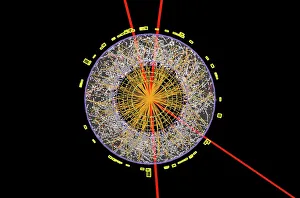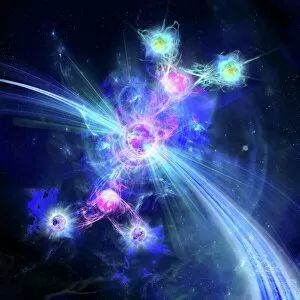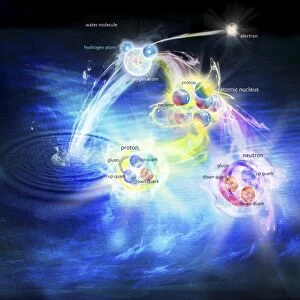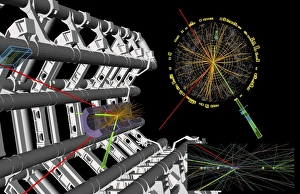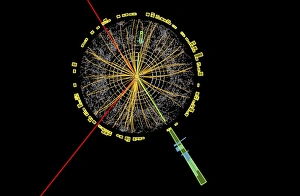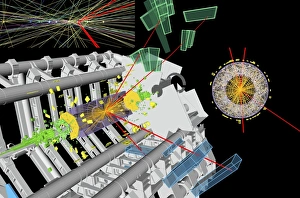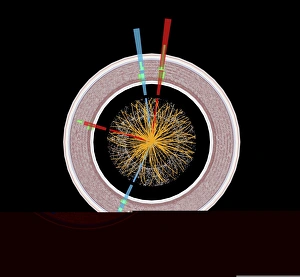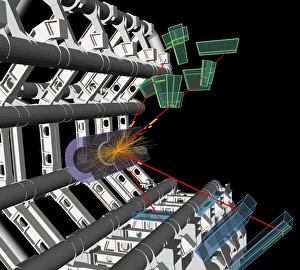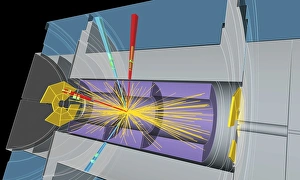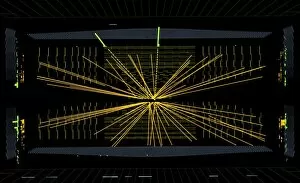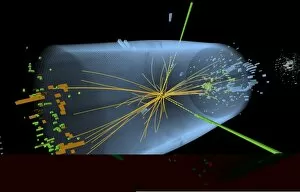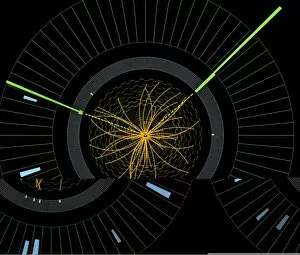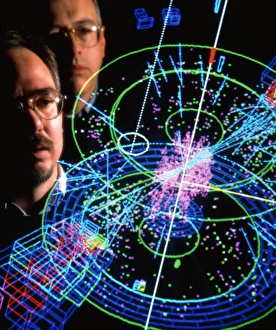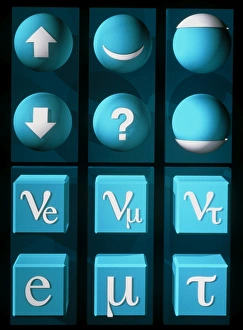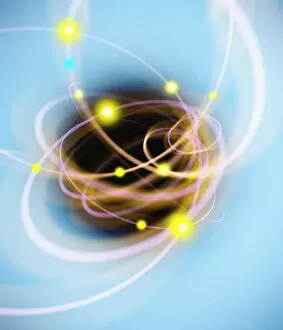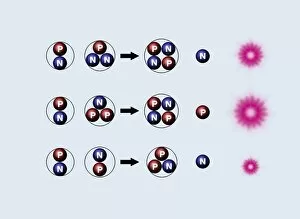Subatomic Particle Collection
"Unveiling the Mysteries of Subatomic Particles: A Journey into the Quantum Realm" In a groundbreaking Higgs boson event
All Professionally Made to Order for Quick Shipping
"Unveiling the Mysteries of Subatomic Particles: A Journey into the Quantum Realm" In a groundbreaking Higgs boson event, scientists at the ATLAS detector C013/6892 witnessed an extraordinary phenomenon that shed light on the fundamental building blocks of our universe. Captured in stunning artwork C018/0936, this elusive subatomic particle revealed its existence and unraveled secrets that had long perplexed physicists. Delving deeper into atomic structures, Plutonium's atomic model showcased intricate arrangements within matter. Artwork C018/0948 depicted the complex web of particles forming everything we see around us, highlighting their significance in understanding the structure of matter itself. The collision of heavy atomic nuclei was captured in another captivating artwork, emphasizing both the power and intricacy involved in studying these minuscule entities. Such collisions paved the way for further exploration and discovery within this enigmatic realm. Conceptual image C013/5625 portrayed a mesmerizing burst of neutrinos, offering a glimpse into their mysterious nature. These ghostly particles have captivated scientists due to their ability to pass through matter effortlessly, challenging our understanding of physics as we know it. Continuing with relentless research efforts at ATLAS detector C013/6893-6894-6891-6889-6890-6888, dedicated scientists embarked on an arduous quest to unravel more about Higgs bosons. These experiments provided invaluable data crucial for comprehending how particles acquire mass and ultimately shaping our comprehension of reality itself. As we delve deeper into subatomic realms, each discovery brings us closer to unlocking profound mysteries that govern our universe. The tireless pursuit by researchers using advanced technology like ATLAS detectors has propelled humanity towards new frontiers where unimaginable wonders await - forever expanding our knowledge and perception of existence itself.

